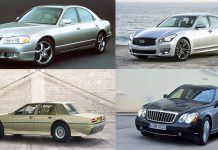The Maruti Suzuki Swift is among the best selling vehicles across all segments in India. Launched here first in 2005, the Swift instantly became very popular and the car later had a sedan spun of its design (Dzire). It is the perfect city car as it comes with both petrol and diesel options with auto and manual gearbox options, has good interiors along with a decent amount of space and gets all the features too. However, can this city smart car take on the non-tarmac, broken surface without scratching its underbelly? Let’s take a look at the video below by master mind to know the same.
To let you know beforehand, this isn’t some serious mud-plugging off-road test of the car as it is pretty obvious that the Swift would get stuck in that case. What is underlined here is that the Maruti Suzuki Swift can tackle the broken surface, unpaved roads and other non-asphalt obstacles without much issue. As seen in the video above, Swift goes all over the broken ground fairly easily. It even attempts an obstacle challenge where two of its wheels are mounted on top of the obstacles while the two on the other side are on the ground.
Maruti Suzuki Swift goes off the road – Video
The ground clearance of the Maruti Suzuki Swift is 163 mm, which though is not class leading but is decent enough to make it an easy to drive vehicle in the city. Rivals like the Hyundai Grand i10 also have similar ground clearance. Do note that these cars are not meant for any such hard-core usage but can take the beating if such situations arrive. Even most of the so-called SUVs can’t get deep into the wild or do hardcore off-roading. Only proper SUVs with 4×4 drivetrain and high-low ratio gearboxes can tackle off-roading properly and hence are the choice of several enthusiasts. Mahindra Thar, Force Gurkha, Mahindra Scorpio, Ford Endeavour and the Toyota Fortuner are some of the popular SUVs in India that can handle off-roading.
Talking about the Swift, the current generation Maruti Suzuki Swift is available with both petrol and diesel engine options. The petrol engine available on the car get is a 1.2-litre four-cylinder naturally aspirated unit that churns out a maximum power of 83 Bhp and 115 Nm of peak torque. The diesel engine, on the other hand, is a 1.3-litre four-cylinder engine that puts out a maximum power of 74 Bhp and peak torque of 190 Nm. Further, both the petrol and diesel engine option get the AMT automatic transmissions. One of the major reasons for its high sales is the segment best fuel efficiency scores both the engines have. The petrol engine option returns a maximum option of 20.4 km/l as per ARAI and the diesel version offers maximum fuel efficiency of 25.2 km/l.
Written By – Devesh Mishra, Source – Cartoq.



















